Fertilizing rhododendrons will help them flourish – the experts explain how and when to do it
Get your flowering shrubs looking their best with the right fertilizer, compost, and water
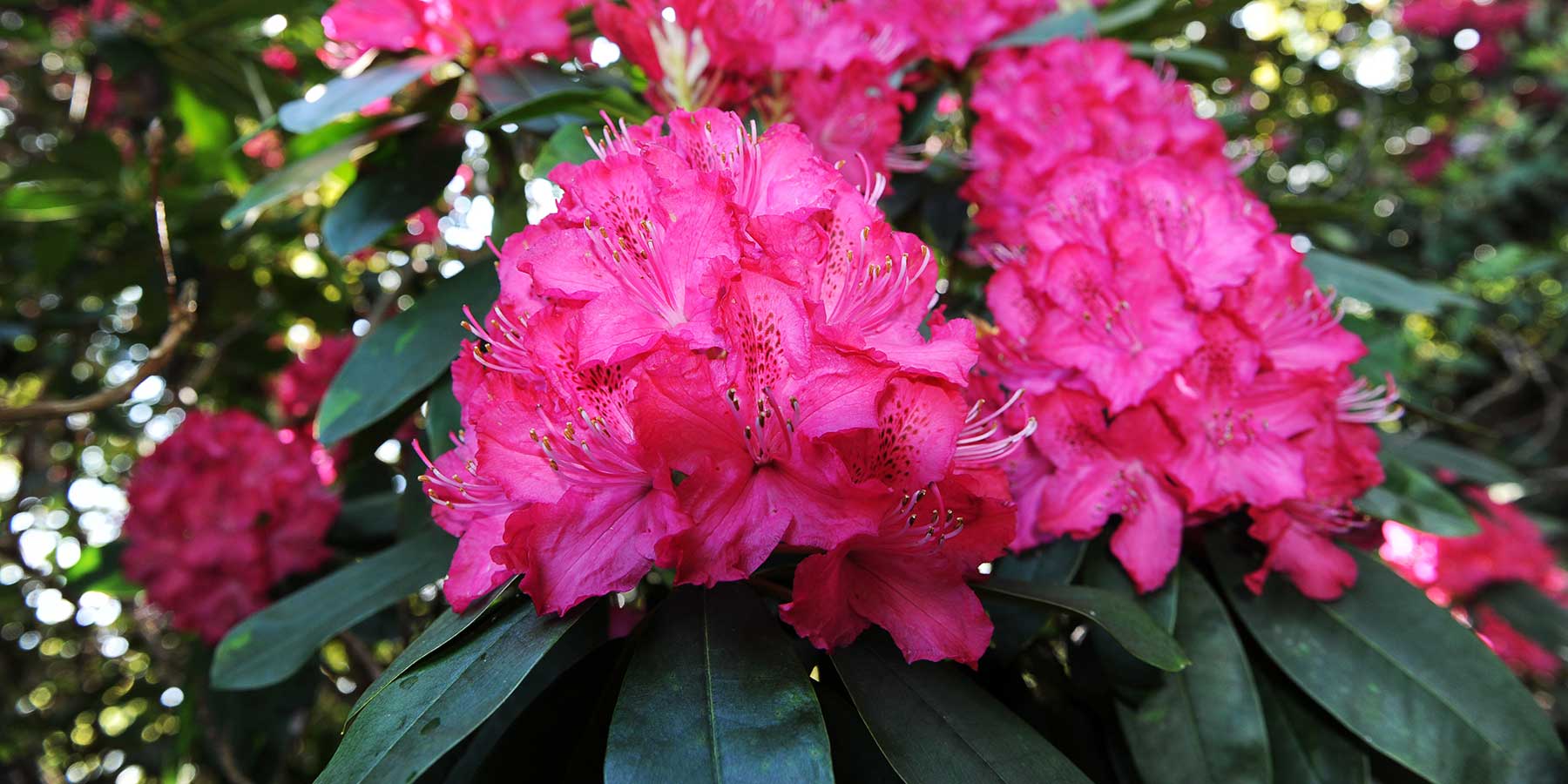

Fertilizing rhododendrons benefits these well-loved plants, but it's important to get it right. The key point to remember is that they like acidic conditions, just like heathers and camellias, so your choice of feed, compost, and even water has to fit with this requirement.
'In the wild, rhododendrons grow on acidic soils in wooded areas of Himalayan regions, China and Japan,' explains Anne Swithinbank, a gardening expert from Amateur Gardening magazine. The pH of soil describes its acidity or alkalinity, she continues, with pH 7 being neutral. 'Numbers below this indicate acidic soil, while above are soils described as alkaline or limey. Rhododendrons enjoy a soil pH of 4.5-6 and just one rise in the pH number represents a tenfold increase in alkalinity.'
The calcium content of alkaline soils means iron becomes less available to plants, Anne continues. This hampers the ability of rhododendrons to use sunlight for photosynthesis, which can make leaves turn yellow. So, if you want your flowering shrub to thrive, then it's time to get the lowdown on the best ways to feed it to maintain an optimal growing environment.
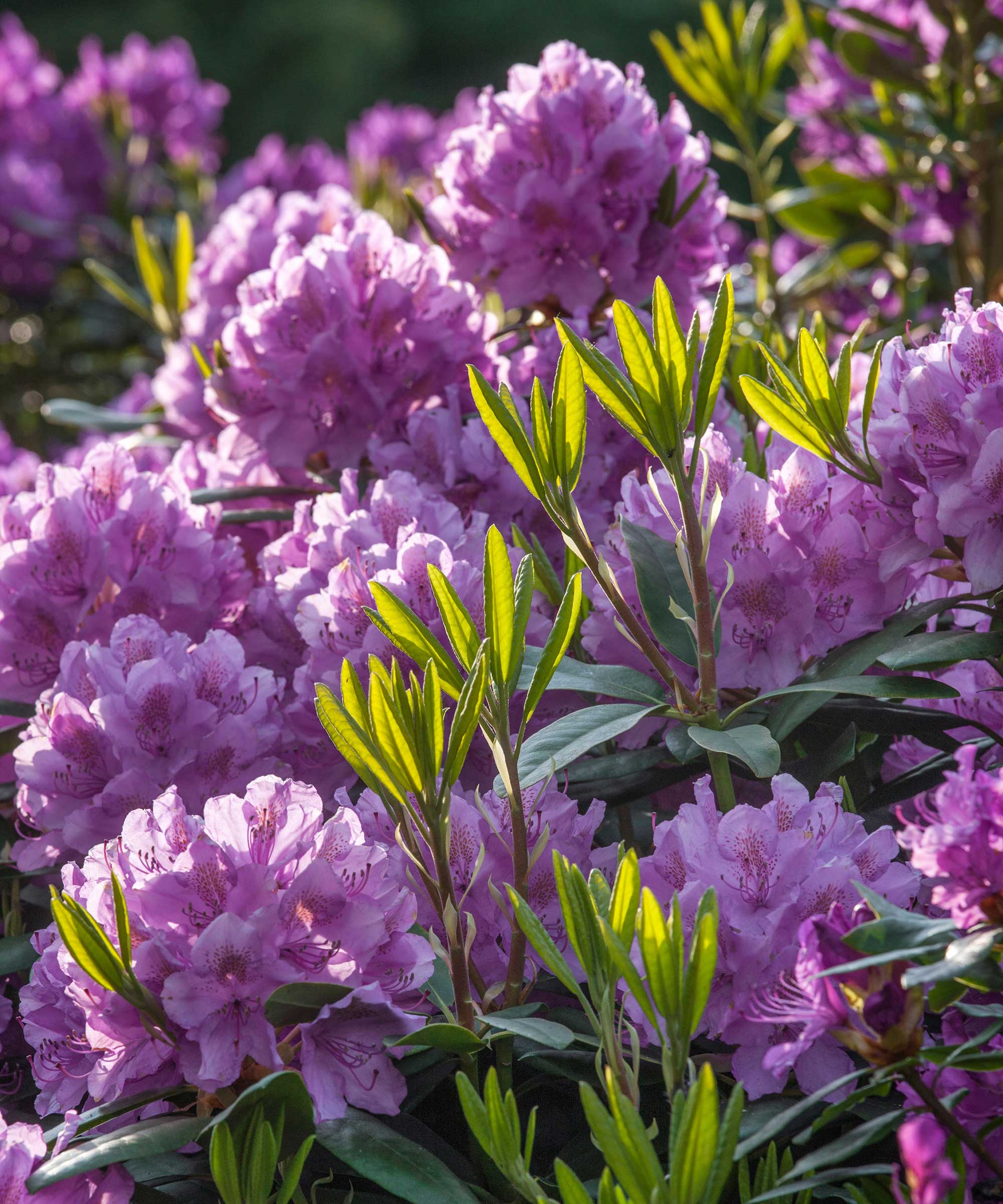
Rhododendrons are loved for their vibrant spring flowers
When and how to fertilize rhododendrons

John has been a garden journalist for over 50 years and regularly answers readers' questions in Amateur Gardening magazine. He has also written four books and has delivered many talks over the years on horticulture.
John Negus of Amateur Gardening recommends feeding rhododendrons once a month with a fertilizer for ericaceous plants, such as Miracle-Gro's formula, available from Amazon. Do this from mid-spring to mid-summer – their flowering season.
You can also invigorate them by applying a liquid seaweed fertilizer every month from late spring to early fall. 'Packed with major and trace elements, this will help your plants prosper,' John says.
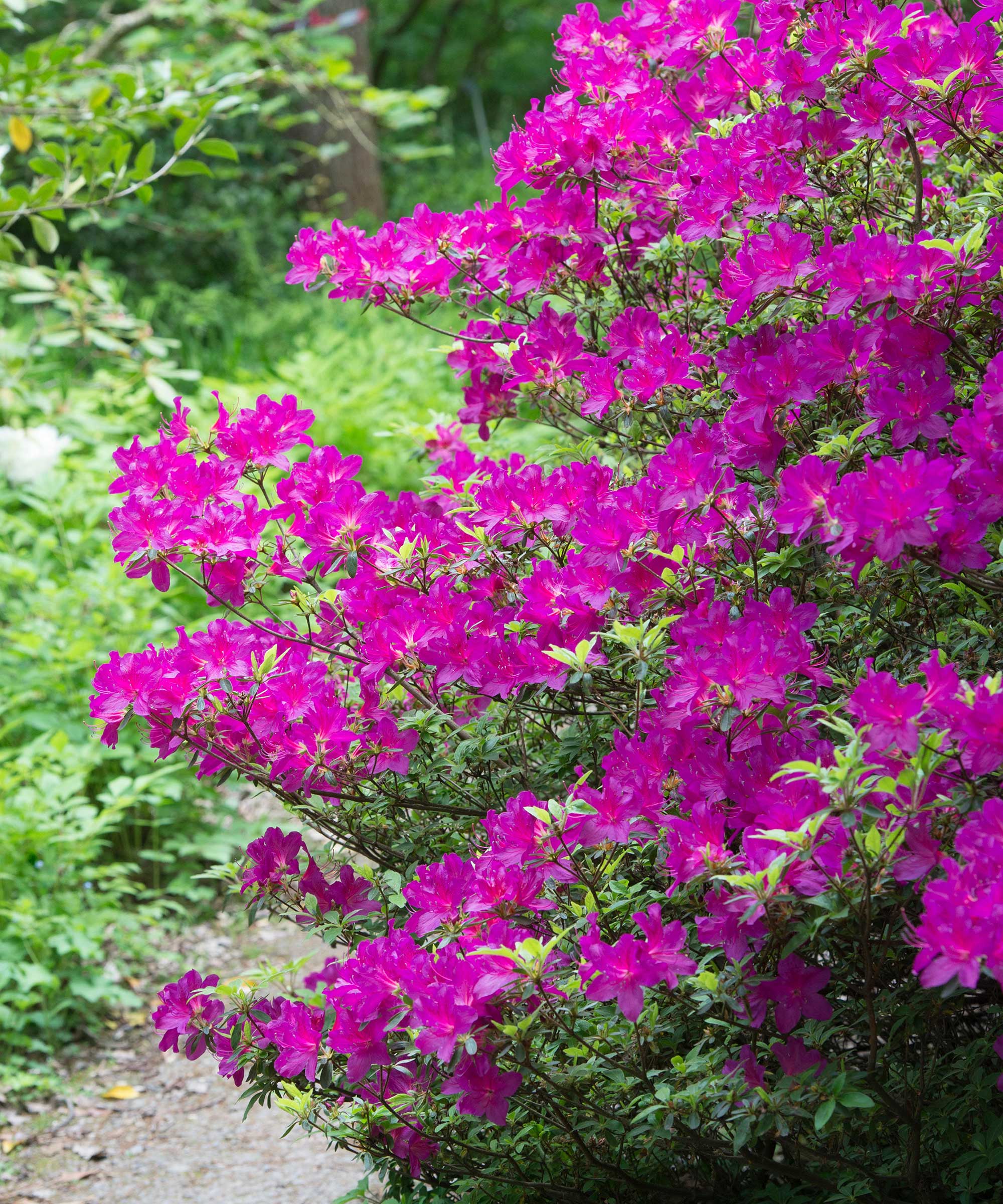
Ensure you use a fertilizer suitable for acid-loving plants
Choosing the right compost
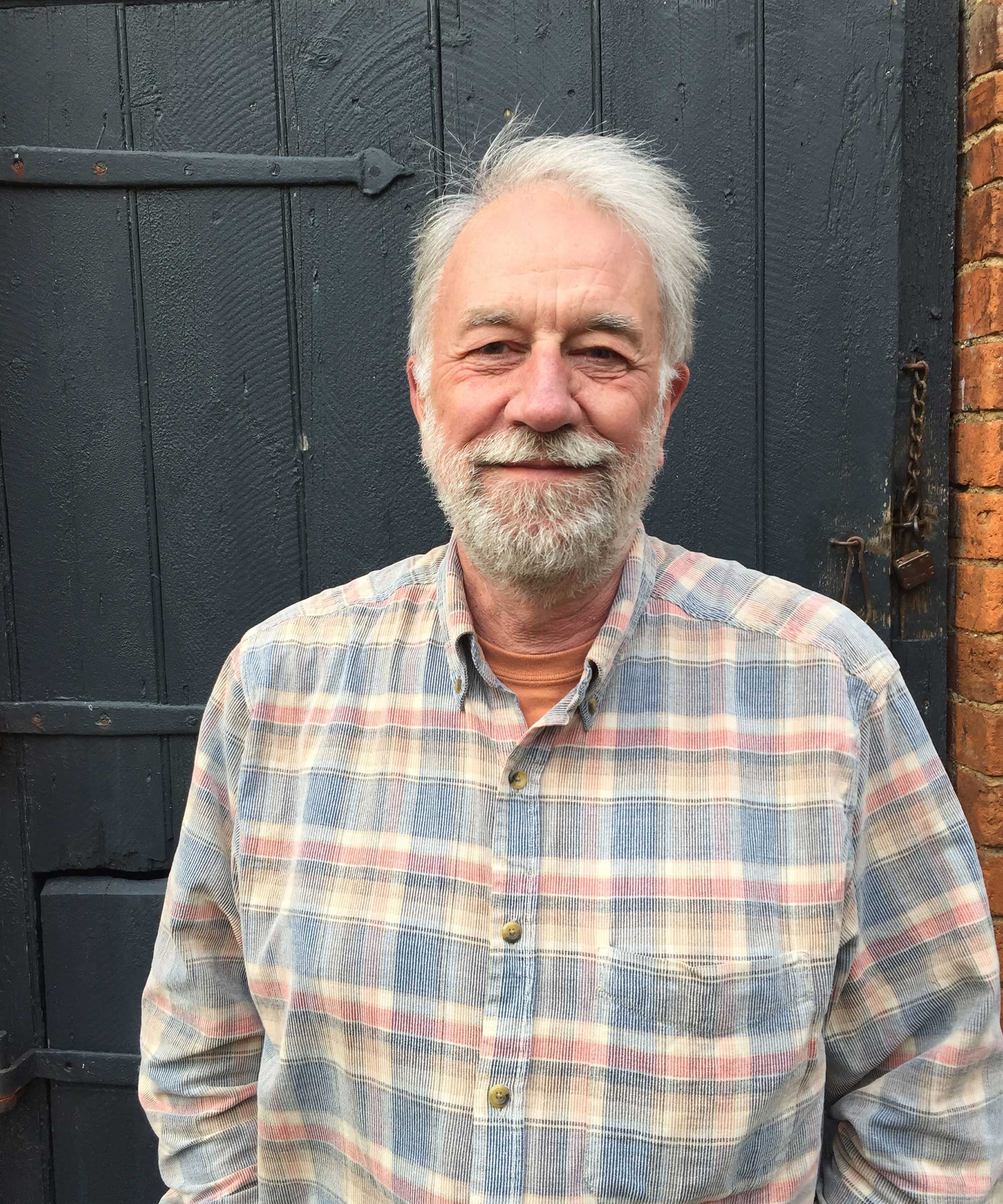
Graham has a wealth of knowledge in all things horticulture. He trained at the prestigious Royal Botanic Gardens in Kew, England, and since then has written more than 20 books on plants and gardening. He gardened in Pennsylvania for 20 years, but has recently returned to his native England.
'Look for compost marked ericaceous or lime-free,' says Graham Rice, an expert from Amateur Gardening. This Coast of Maine organic one from Amazon is well-rated. For plants grown in container gardens, it can be beneficial to replace the top 2in of compost every winter, according to the Royal Horticultural Society.
Even with the right compost, it's important to use the right fertilizer, too. 'There’s no point going to the trouble of choosing compost your lime-hating plants enjoy but then giving them liquid feed they hate,' Graham says.
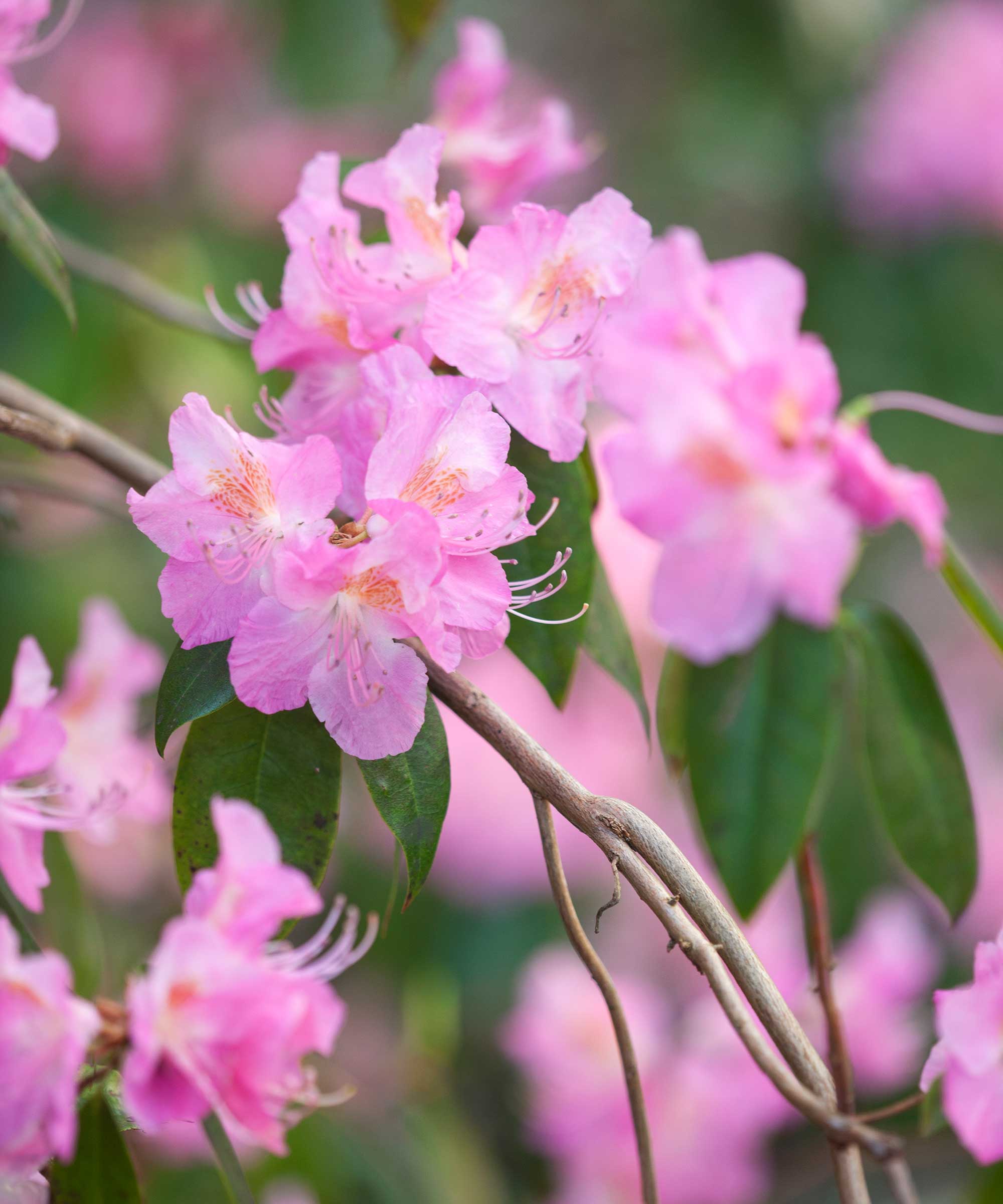
When cared for correctly, these flowering shrubs with sparkle
Watering rhododendrons
According to the Royal Horticultural Society, tap water has too much calcium for rhododendrons, and reduces the acidity of the soil they're growing in.
The simple answer is to harvest rainwater from a water butt, says Graham Rice. 'Rainwater is naturally soft water and is ideal for lime-hating plants.'
'There isn’t a product that will convert tap water into the equivalent of rainwater, which lacks the calcium and magnesium that make it "hard",' explains John Negus. 'However, the Royal Horticultural Society suggests that over short periods tap water is perfectly fine for ericaceous plants during times of drought.
'I also read some other suggestions including adding a drop of vinegar to the watering can, soaking a couple of tea bags in the water overnight, leaving the water to stand for a couple of days and using water that has passed through a water-softening system,' he continues. 'None of these actually substitutes for rainwater, but certainly the first three won’t do the plants any harm. The water-softened tap water contains sodium instead of calcium and magnesium, so will potentially cause problems after prolonged use.'
FAQs
Should you use wood ash to fertilize rhododendrons?
Wood ash contains small amounts of nutrients, including iron and magnesium, as well as potash. For this reason, some gardeners use it, once cooled, around their garden plants to give them a boost.
However, it is a very alkaline material so should never be used around acid-loving plants such as rhododendrons, azaleas and blueberries.
Should you use bone meal to feed rhododendrons?
Although bone meal can be beneficial as a balanced organic fertilizer, particularly when sprinkled around plants in the fall, it has an alkaline end reaction. For this reason, just as with wood ash, it should be kept well away from lime-hating plants such as rhododendrons.
Are there any rhododendrons that are lime-tolerant?
If all of the above feels a little too much trouble, then you may be pleased to know that there are now some varieties of rhododendron that are more tolerant to limey conditions.
'A series of rhododendrons grafted onto lime-tolerant rootstocks is now available,' says Graham Rice of Amateur Gardening. 'Choice varieties are grafted onto the Inkarho rootstock, which was developed from a rhododendron plant found growing in a lime quarry in Germany. The result is rhododendron plants that grow happily in soil where other rhododendrons just won’t grow.'
Sign up to the Homes & Gardens newsletter
Design expertise in your inbox – from inspiring decorating ideas and beautiful celebrity homes to practical gardening advice and shopping round-ups.

Holly started writing about gardening five years ago, and she is a regular contributor to Homes & Gardens. She has also written many gardening features for Woman & Home and Real Homes, too. She has previous experience as a professional gardener, where she helped to plant and maintain private gardens. Holly has also looked after allotment plots over the years and loves to grow her own flowers and veggies from seed. In her spare time, she enjoys visiting local gardens, botanical drawing, and tending to her ever-growing collection of houseplants.
-
 I gave the ‘try-for-five’ method a go in my small home – it's a brilliantly easy way to beat chore procrastination in seconds
I gave the ‘try-for-five’ method a go in my small home – it's a brilliantly easy way to beat chore procrastination in secondsThis method is great for those with executive dysfunction
By Chiana Dickson Published
-
 Josh Brolin’s maximalist living room: love it or hate it? Our readers were split, but where do you stand on this memorabilia-packed space?
Josh Brolin’s maximalist living room: love it or hate it? Our readers were split, but where do you stand on this memorabilia-packed space?Maximalism has a way of dividing opinions among design aficionados, and few spaces are quite as decisive as the actor's unique, yellow living room
By Megan Slack Published